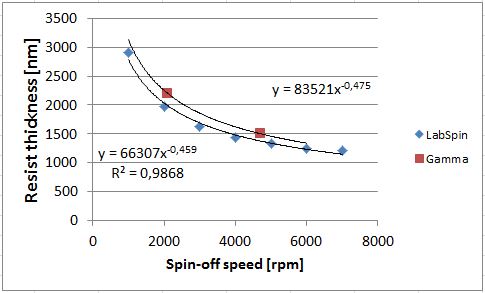Specific Process Knowledge/Lithography/5214E
Feedback to this section: click here
AZ 5214E is a positive UV photoresist with image reversal capability.
Spin coating

Soft bake: 60s @ 90°C
Image reversal
If 5214E is baked after exposure, the exposed resist will cross-link, making it insoluble in the developer. If the substrate is flood exposed after the reversal bake, the areas not exposed in the initial image exposure become soluble, and will be removed in the subsequent development. This procedure effectively makes AZ 5214E a negative resist.
The image reversal process greatly increases the sensitivity of AZ 5214E, and the dose of the image exposure is a critical parameter, especially if negative resist sidewalls are desired. Half dose of the normal, positive process is a good starting point for optimization. Similarly, the reversal bake is also a critical step, and must be tightly controlled in order to achieve consistent results. If negative sidewalls are desired, 100-120s at 110°C is recommended (as well as a thickness above 2µm), but if straight sidewalls are desired, 100-120s at 120°C can be used. The flood exposure, on the other hand, is not critical, and double dose of the normal, positive process is generally used.
Development
A 1.5-2.2µm AZ 5214E resist film is fully developed in 60s using TMAH (AZ 726). Depending on the exposure dose, thicker coatings may develop in 1 min, but it is probably better to aim for a similar development speed (2µm/min).
